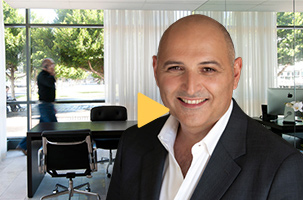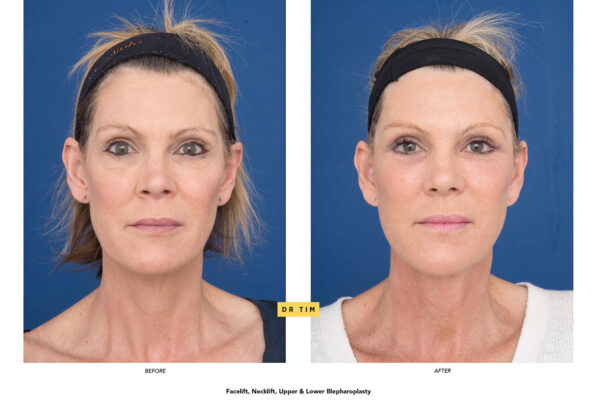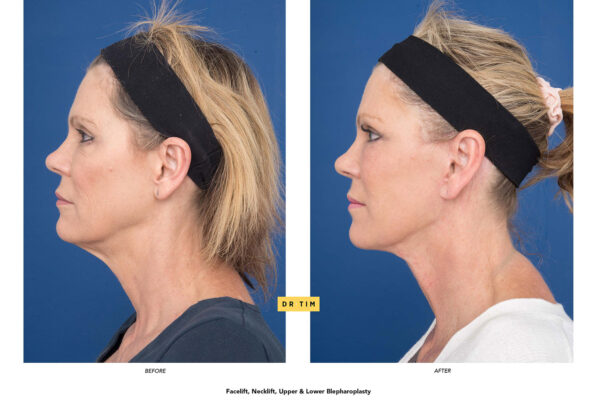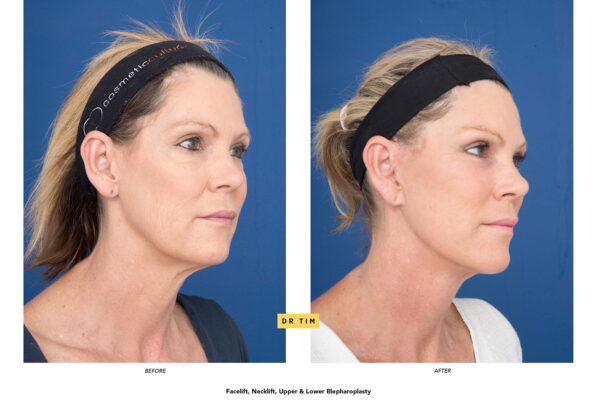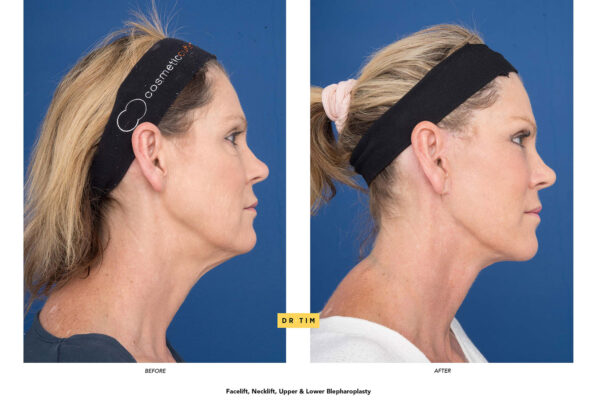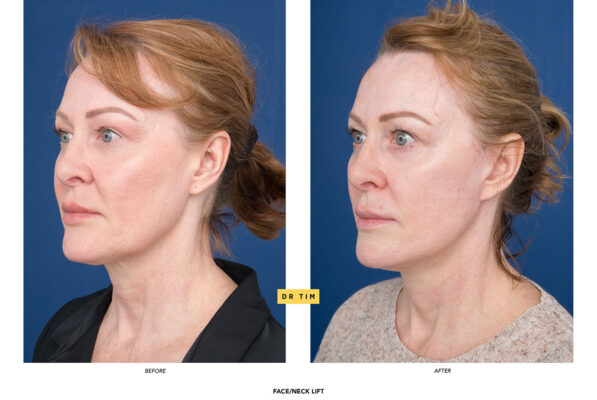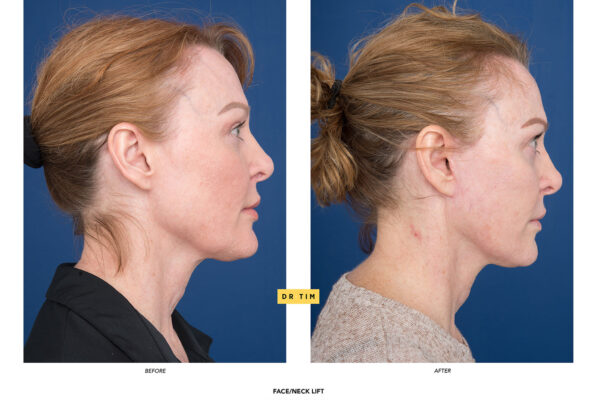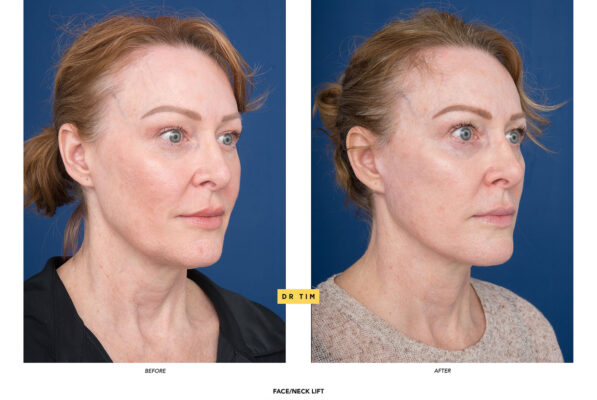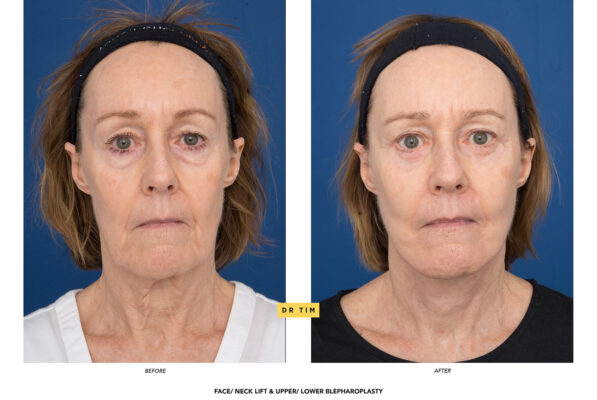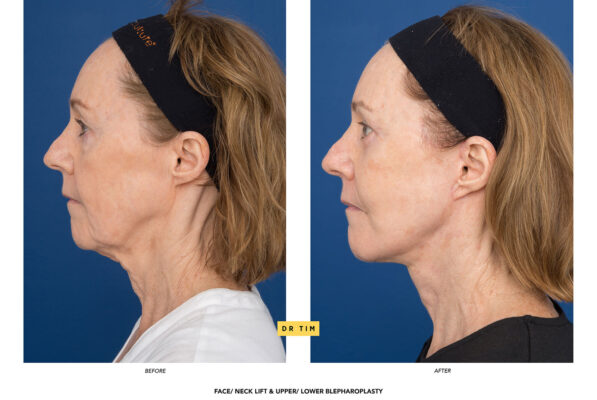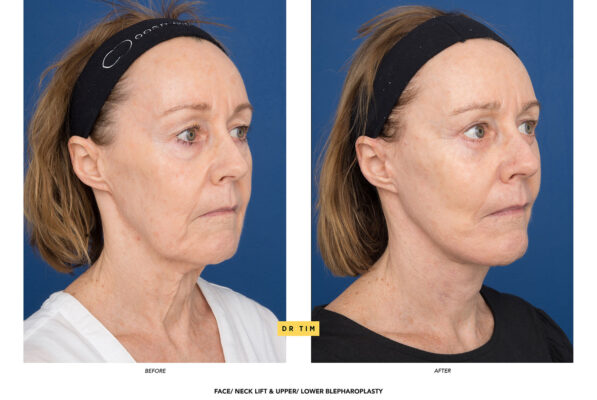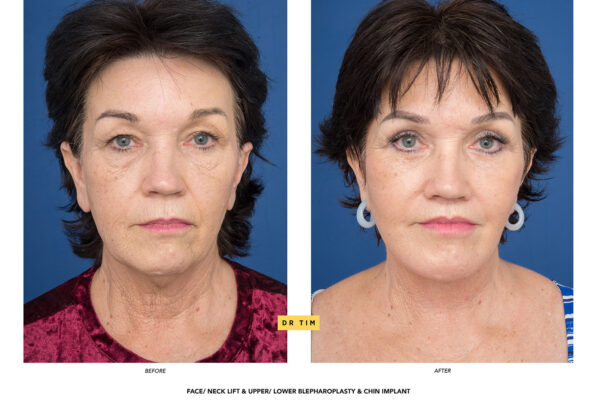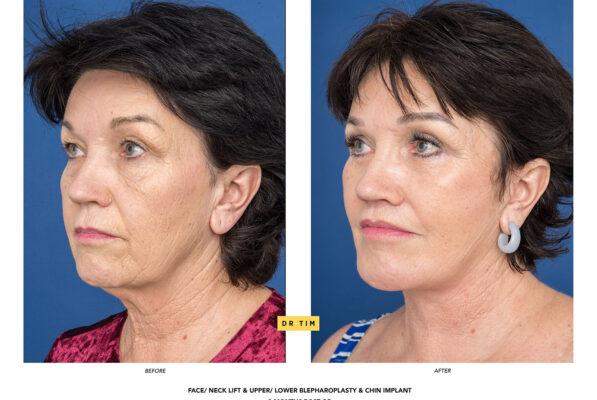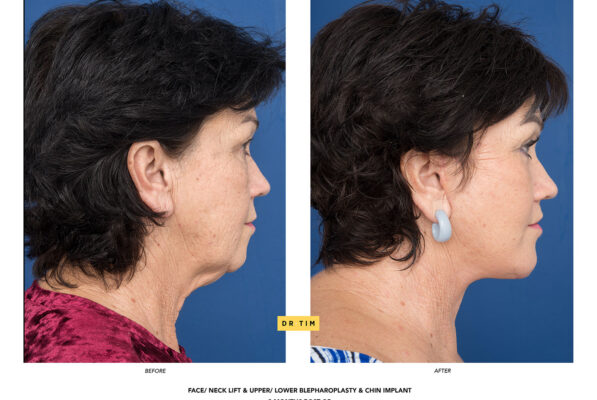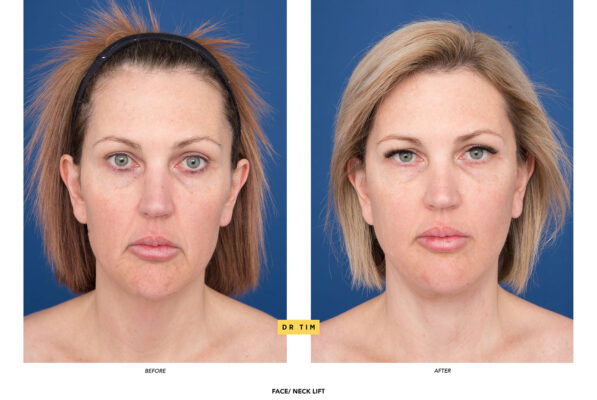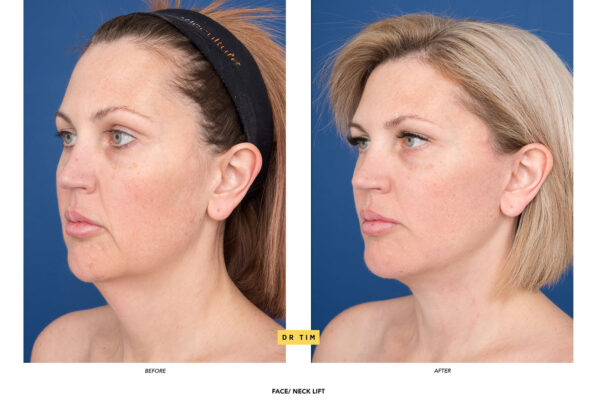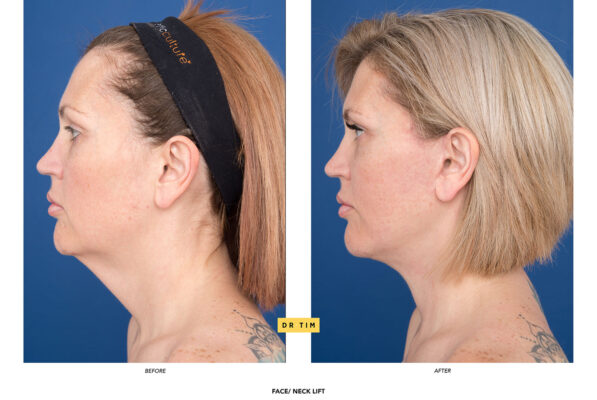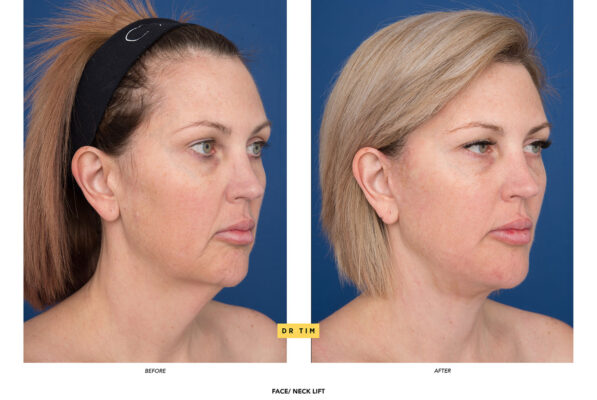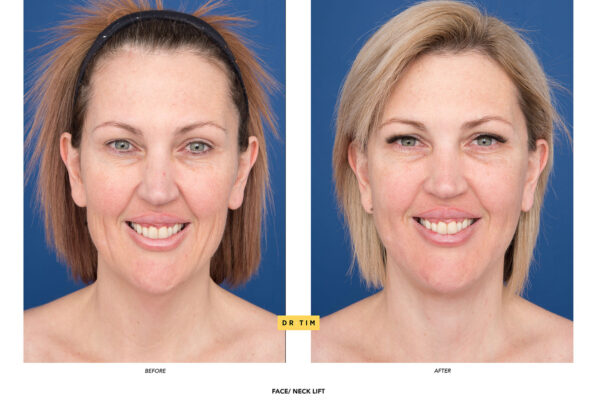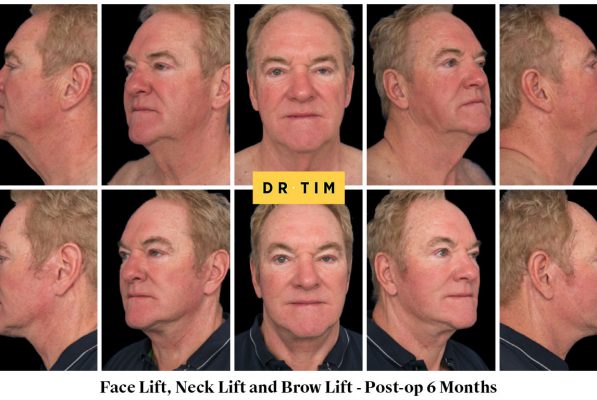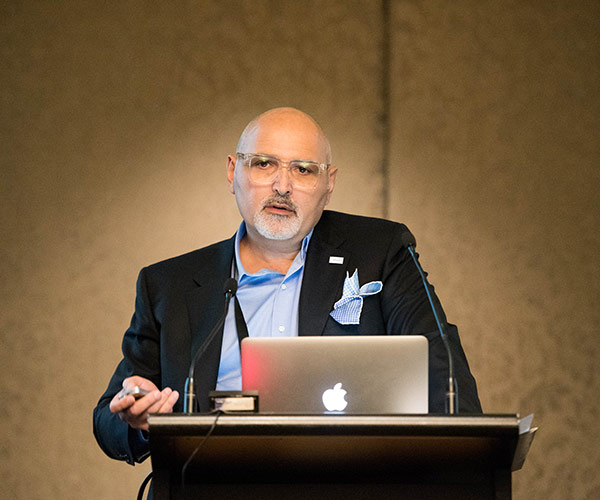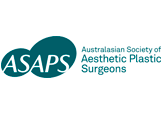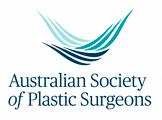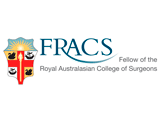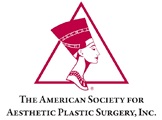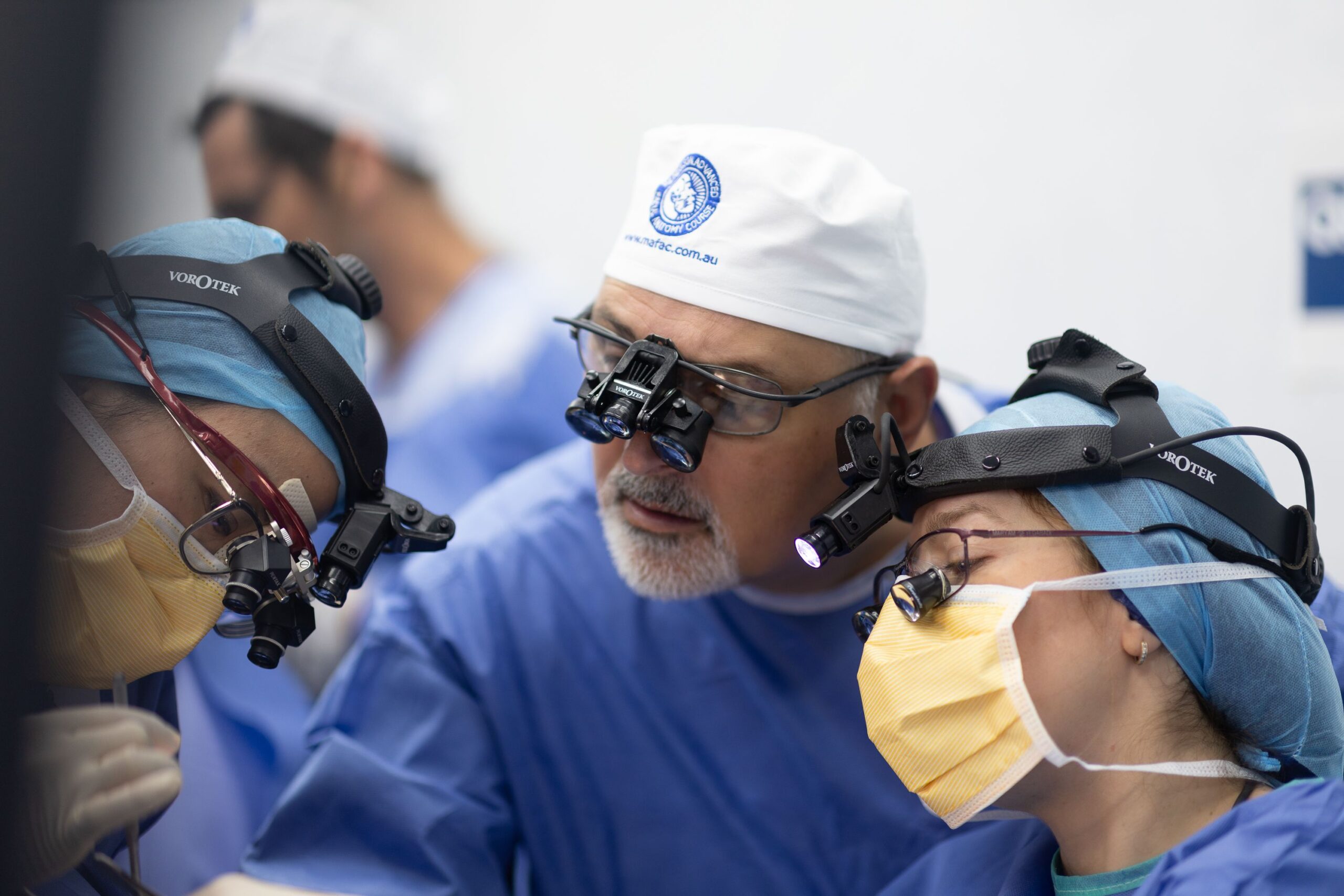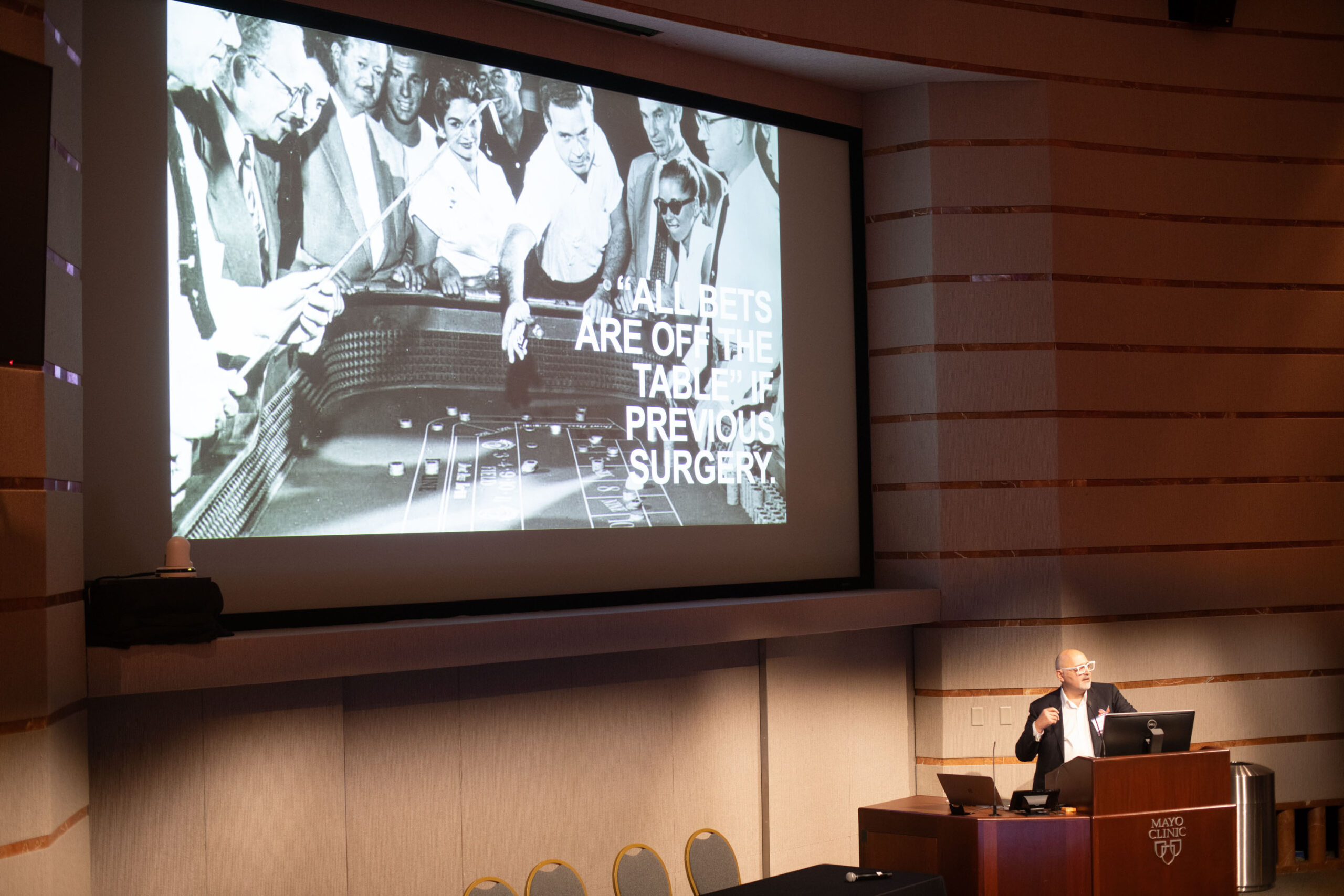Facelift (Rhytidectomy) in Sydney
Technical Explanation of the Procedure
A facelift, medically known as a rhytidectomy, is a surgical procedure designed to reduce visible signs of ageing by improving sagging skin, deep wrinkles, and loss of facial volume. It focuses on the lower two-thirds of the face and neck, restoring a more youthful and refreshed appearance.
The procedure typically involves carefully placed incisions around the ears, hairline, and occasionally under the chin to minimise visible scarring. Through these incisions, the underlying SMAS (superficial muscular aponeurotic system) layer and facial tissues are repositioned while excess skin is removed. This approach provides natural-looking, long-lasting results, avoiding the overly “pulled” appearance associated with older techniques.
A facelift may address:
- Sagging cheeks
- Jowls along the jawline
- Deep nasolabial folds
- Loose skin and excess fat in the neck
Sometimes, a facelift can be combined with additional procedures such as a neck lift, eyelid surgery (blepharoplasty), or fat grafting to achieve harmonious results.
Quick Facts
- Procedure Duration: 3–6 hours.
- Anaesthesia: General anaesthesia or sedation, depending on the case.
- Hospital Stay: Day surgery or overnight stay.
- Results: Initial improvements visible within weeks; final results after 3–6 months.
- Longevity: Results typically last 10–15 years, depending on lifestyle and genetics.
- Best Candidates: Healthy individuals with moderate to severe signs of aging in the face and neck.
What to Expect
Before Surgery:
During your consultation, Dr. Tim will discuss your concerns, assess your facial anatomy, and outline a personalized surgical plan. This is also an opportunity to address questions about the procedure, recovery, and expected results.
During Surgery:
Performed in a fully accredited surgical facility, the facelift is tailored to your unique needs. The procedure involves repositioning underlying tissues, removing excess skin, and tightening the remaining skin for a smoother, youthful contour.
After Surgery:
You may experience swelling, bruising, and mild discomfort, which are normal parts of the healing process. Dr. Tim and his team provide detailed post-operative instructions and ongoing support throughout your recovery.
Anaesthesia Risks: The use of general anaesthesia carries its own risks, such as adverse reactions or complications.
Asymmetry: Post-surgery, there might be a minor facial asymmetry, but this is typically not noticeable.
Hair Loss at Incision Sites: Some patients may experience temporary or permanent hair loss along the incision lines.
Prolonged Swelling: In some cases, the swelling may persist longer than expected, affecting the final result of the procedure.
Revision Surgery: In some cases, additional surgery might be necessary due to complications or if the result of the initial surgery doesn’t meet your expectations.
Delayed Healing: Some patients might take longer to heal due to individual factors like age, health status, and lifestyle habits such as smoking.
Recovery Tips
- Follow Post-Operative Instructions: Adherence to your surgeon’s recommendations is crucial for a smooth recovery.
- Manage Swelling: Keep your head elevated, even when sleeping, and use cold compresses as directed.
- Stay Active, but Rest: Light walking promotes circulation, but avoid strenuous activities for at least 4–6 weeks.
- Wear Compression Garments: If prescribed, these help reduce swelling and support healing tissues.
- Hydration and Nutrition: Maintain a healthy diet and stay hydrated to support recovery.
- Be Patient: Full results take time, and it’s normal for swelling to persist for several weeks.
This content is suitable for an 18+/adult audience only
These photos are of consented patients of this clinic/medical practitioner and have not been altered or digitally enhanced.
Outcomes shown are only relevant for this patient and do not necessarily reflect the results other patients may experience, as results may vary due to many factors including the individual’s genetics, diet and exercise.
Click on the images below to enlarge
